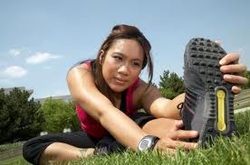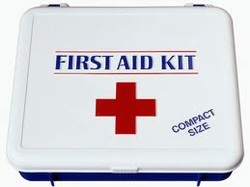Fitness, Medicine & High Altitude,
Fitness

Physical fitness is a must for climbing Kilimanjaro. A good indication of the appropriate fitness level required is that you should be able to jog for 30 minutes without getting out of breath. Before embarking on the climb we recommend that you should undertake a regime of fitness combining aerobic and light weight training to build up your strength and stamina. This will better equip you to enjoy the climb and give you a greater chance of reaching the summit.
Medicine & High Altitude

If you’ve never been to altitudes above 2500 metres, it is hard to predict how you may react. Some people get altitude sickness while others are less prone. Most people can go up to 2500m with minimal effects, it is important to be cautious. As altitude increases there is literally less oxygen in the air, meaning that your body must adjust to having less oxygen. For example, at 3600m there is 40% fewer oxygen molecules per breath, ascending too quickly does not give your body enough time to acclimatize to this reduction in the amount of oxygen available to your body. This can lead to altitude illnesses and can be potentially serious or life threatening. Our guides are highly experienced, you must communicate any symptoms you may be feeling and listen to their advice and instructions at all times.
You may not feel hungry above 3000m, but you should try and eat. Eat Carbohydrates and Fruits and avoid rich and fatty foods as they are harder to digest. Drink plenty of fluids – at least 3 litres of water daily. Keep enough water bottles to carry this. Dehydration is one of the most common reasons for failing to complete the climb. If you dress in layers, you can take off clothes before you sweat too much, thereby reducing water loss.
Acute Mountain Sickness (AMS) is common at high altitudes (above 3000m); most people will have mild symptoms: headache, nausea, fatigue, shortness of breath, sleeplessness, loss of appetite and swelling of the hands and feet. Symptoms tend to be worse at night. You can reduce these by allowing yourself time to acclimatise by taking an extra day over the ascent, eating and drinking properly, and trying not to push yourself. By walking slowly and steadily, you will tire less quickly than if you try and rush each day’s walk. As long as symptoms are mild, and only a nuisance, ascent can continue at a moderate rate.
It is essential that you communicate any symptoms of illness immediately to our guides. If symptoms are severe, and if they are getting worse, then descend immediately. Moderate AMS includes a severe headache that is not relieved by medication, nausea and vomiting, increasing weakness and fatigue, shortness of breath and decreased coordination (ataxia). At this stage, only advanced medication or descent can reverse the problem. By descending 500m, you can start recovery. Sleeping high with significant symptoms is dangerous; if in doubt descend to sleep low. Severe AMS adds the inability to walk, decreasing mental status and fluid build up in the lungs to the above symptoms. Immediate descent to lower altitudes is required.
High Altitude Pulmonary Oedema (HAPE) and High Altitude Cerebral Oedema (HACE) are both altitude related problems that can be rapidly fatal if you do not descend. Lack of oxygen at high altitude can lead to leakage of fluid through the capillary walls into either the lungs or brain.
HAPE occurs as a result of fluid build up in the lungs preventing effective oxygen exchange. As the condition becomes more severe, the level of oxygen in the bloodstream decreases leading to impaired cerebral function and death. Symptoms include shortness of breath when at rest, coughing up frothy spit or even blood, tightness in the chest, marked fatigue and undue breathlessness compared to friends. In cases of HAPE immediate descent is a necessary life saving measure and evacuation to a medical facility for follow up treatment a must.
HACE occurs as a result of swelling of the brain tissue from fluid leakage. Symptoms include a headache, loss of co-ordination (ataxia), weakness, decreasing levels of consciousness, including disorientation, loss of memory, hallucinations, psychotic behavior and coma. It generally occurs after a week or more at high altitude. Severe instances can lead to death if not treated quickly. In cases of HACE immediate descent is a necessary life saving measure and evacuation to a medical facility for follow up treatment a must.
Our guides are highly experienced and if you start to suffer symptoms of HACE or HAPE they will ensure that you descend to lower altitude quickly.
Hypothermia is a lowering of body temperature usually caused by a combination of cold and wet. Mild cases usually mean uncontrollable shivering. In this case, put on dry, warm clothes, and get into a sleeping bag. This will normally raise your body temperature sufficiently. Severe cases are potentially fatal. Symptoms include disorientation, lethargy, metal confusion (including and inappropriate feeling of well – being and warmth) and coma. In severe cases the rescue team should be summoned.

